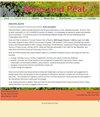用胶体纳米二氧化硅稳定泥炭
IF 1.5
4区 环境科学与生态学
Q4 ENVIRONMENTAL SCIENCES
引用次数: 6
摘要
胶体纳米二氧化硅水溶胶是电化学稳定聚合无定形二氧化硅在低粘度悬浮液。它们对土壤健康和生态系统服务功能没有已知的不利影响,因此可以作为一种替代的低粘稳定材料在地基工程中使用。通过内部程序合成六个等级的胶体纳米二氧化硅,并将其引入天然泥炭土。在处理后立即测量了压实和改性土的峰值和残余抗压强度,并在处理后的四个应变水平上进行了测量。研究结果表明,尽管纳米二氧化硅含量与抗压强度之间存在直接相关性,但纳米二氧化硅含量的增加并不一定能在大应变下提供稳定性。这是一个主要的限制。讨论了改性泥炭的颗粒级运动学,以获得二氧化硅絮凝体对峰值和临界状态强度等宏观力学量的建立所起的作用的新见解。总的来说,用纳米二氧化硅改性泥炭导致强度的提高和复合材料的形成,通常具有更大的膨胀行为。当作为单一稳定剂使用时,设计15%至20%级的纳米二氧化硅溶液产生相当高的强度,尽管在处理后的前七天需要采取预防措施防止改性泥炭土过度紧张。在此最佳等级下,当塑性应变为峰值应变的1.5倍时,进一步应变的强度损失上限为9%。本文章由计算机程序翻译,如有差异,请以英文原文为准。
Stabilisation of peat with colloidal nanosilica
Colloidal nanosilica hydrosols are electrochemically stabilised polymerised amorphous silica in low viscosity suspensions. They have no known adverse impact on soil health and ecosystem service functions, thereby having a scope for use in groundworks as an alternative low-viscose stabilising material. Six grades of colloidal nanosilica are synthesised through an in-house procedure and introduced to a natural peat soil. The peak and residual compressive strength of compacted and modified soils are measured immediately after treatment and in four strain levels post treatment. Findings suggest that, despite the direct correlation between the nanosilica content and compressive strength, an increase in nanosilica content does not necessarily offer stability at larger strains. This is a major limitation. The particle-level kinematics in modified peat is discussed to gain a new insight into the role played by silica flocs on the build-up of macro-mechanical quantities such as peak and critical state strength. Overall, modification of peat with nanosilica leads to improvements in strength and formation of composites with generally more dilative behaviour. When used as a single stabiliser, a design 15 % to 20 % grade nanosilica solution yields a reasonably high strength although precautions against excessive straining of modified peat soils need to be taken in the first seven days post treatment. At this optimum grade, the loss of strength on further straining is capped to 9 % at plastic strains 1.5 times the peak strain.
求助全文
通过发布文献求助,成功后即可免费获取论文全文。
去求助
来源期刊

Mires and Peat
ENVIRONMENTAL SCIENCES-
CiteScore
2.30
自引率
16.70%
发文量
0
审稿时长
33 weeks
期刊介绍:
Mires and Peat is a peer-reviewed internet journal focusing specifically on mires, peatlands and peat. As a truly “free-to-users” publication (i.e. NO CHARGES to authors OR readers), it is immediately accessible to readers and potential authors worldwide. It is published jointly by the International Peatland Society (IPS) and the International Mire Conservation Group (IMCG).
Mires and Peat is indexed by Thomson Reuters Web of Science (2017 Impact Factors: 1.326 [two-year] and 1.638 [five-year]), Elsevier Scopus, EBSCO Environment Complete, CABI Abstracts, CSA Proquest (including their Aquatic Science and Fisheries Abstracts ASFA, Ecology, Entomology, Animal Behavior, Aqualine and Pollution databases) and Directory of Open Access Journals (DOAJ). Mires and Peat also participates in the CABI Full Text Repository, and subscribes to the Portico E-journal Preservation Service (LTPA).
Mires and Peat publishes high-quality research papers on all aspects of peatland science, technology and wise use, including:
ecology, hydrology, survey, inventory, classification, functions and values of mires and peatlands;
scientific, economic and human aspects of the management of peatlands for agriculture, forestry, nature conservation, environmental protection, peat extraction, industrial development and other purposes;
biological, physical and chemical characteristics of peat; and
climate change and peatlands.
Short communications and review articles on these and related topics will also be considered; and suggestions for special issues of the Journal based on the proceedings of conferences, seminars, symposia and workshops will be welcomed. The submission of material by authors and from countries whose work would otherwise be inaccessible to the international community is particularly encouraged.
 求助内容:
求助内容: 应助结果提醒方式:
应助结果提醒方式:


